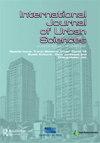Bridging the top-down and bottom-up approaches to smart urbanization? A reflection on Beijing’s Shuangjing International Sustainable Development Community Pilot
IF 2.9
3区 工程技术
Q2 ENVIRONMENTAL STUDIES
引用次数: 3
Abstract
ABSTRACT The relation between planning and smart city development is interwoven. On the one hand, planning is being digitalized and ‘smartificated’, but threatened by the growing dominance of IT corporations in urban development. On the other hand, bottom-up smart initiatives at the neighbourhood level are emerging to challenge top-down control, but the relation between top-down and bottom-up approaches is conflicting and often disconnected. In the Chinese context, a newly established neighbourhood planning mechanism – community duty planners (CDPs) – appears to open up opportunities for bridging bottom-up and top-down approaches to smart city development. In Beijing, the CDPs are institutionalized under Beijing’s Refined Urban Management (RUM) framework which aims to improve the city’s built environment and quality of living. The CDPs play the role of intermediary actors connecting local government with the communities. The article is a reflection on the Shuangjing International Sustainable Development Community Pilot and the CDPs of Shuangjing Neighbourhood. It describes and reflects on how planning institutions can influence smart city development at the neighbourhood level and how bottom-up initiatives can be connected to long-term top-down plans. Highlights An institutional planning arrangement placing planners as intermediary actors at the neighbourhood level can help to resolve the conflicts between short-term and long-term objectives in smart city development. Besides planners, an intermediary role can be fulfilled by groups or individuals who have mastery of IT and a good grasp of urban knowledge. Future community planning education is suggested to incorporate more IT-related components. An open system is necessary for connecting top-down and bottom-up initiatives.连接自上而下和自下而上的智慧城市化方法?北京双井国际可持续发展社区试点的思考
规划与智慧城市发展的关系是交织在一起的。一方面,规划正在数字化和“智能化”,但受到IT公司在城市发展中日益占主导地位的威胁。另一方面,社区层面自下而上的智能举措正在出现,以挑战自上而下的控制,但自上而下和自下而上的方法之间的关系是相互冲突的,而且往往是脱节的。在中国的背景下,一个新建立的邻里规划机制——社区责任规划师(CDP)——似乎为自下而上和自上而下的智慧城市发展方法提供了机会。在北京,CDP是在北京精细城市管理(RUM)框架下制度化的,该框架旨在改善城市的建筑环境和生活质量。CDP扮演着连接地方政府和社区的中介角色。本文是对双井国际可持续发展社区试点和双井社区发展计划的反思。它描述并反思了规划机构如何影响社区层面的智能城市发展,以及自下而上的举措如何与自上而下的长期计划联系起来。亮点将规划者作为社区层面的中介角色的制度规划安排有助于解决智慧城市发展的短期和长期目标之间的冲突。除了规划者之外,掌握信息技术和掌握城市知识的团体或个人也可以发挥中介作用。建议未来的社区规划教育纳入更多与信息技术相关的组成部分。开放系统对于连接自上而下和自下而上的计划是必要的。
本文章由计算机程序翻译,如有差异,请以英文原文为准。
求助全文
约1分钟内获得全文
求助全文

 求助内容:
求助内容: 应助结果提醒方式:
应助结果提醒方式:


